Radios: what are they and how to choose?

Modern radios are a convenient and practical technique that is used at home, in nature, and on long trips. There are a huge number of modern receiver models, so it is very important to know how to choose the right one.
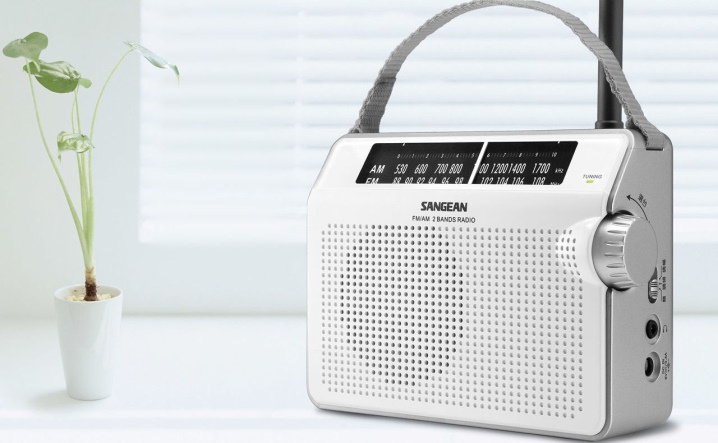
What it is?
A radio receiver is a device that can selectively receive radio waves and then reproduce a high-quality modulated audio signal. Today there are devices that catch radio broadcasting not on the air, but on the Internet - these are the so-called Internet receivers.
Since household broadcasting devices are sold without mandatory certificates, the manufacturers indicate only the most important points in the data sheet.
Among them, you should pay attention to parameters such as current consumption, sensitivity, and output power.
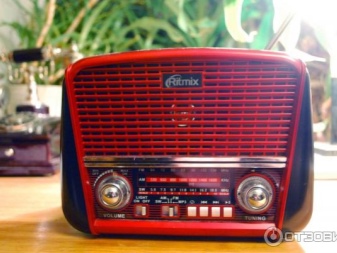
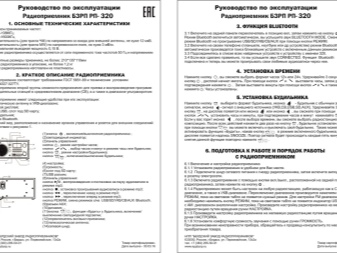
Device and principle of operation
First you need to consider what this device consists of, or rather, what is inside it. There are not so many details in the radio receiver:
- first of all, it is a transistor that is used to amplify sound;
- inductive coil required for the oscillatory circuit;
- speaker;
- resistor;
- variable capacity;
- antenna - either external or built-in;
- power unit.
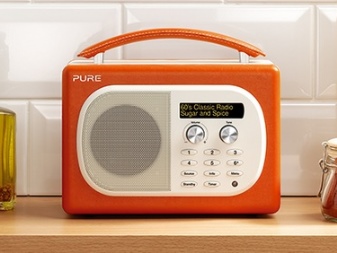
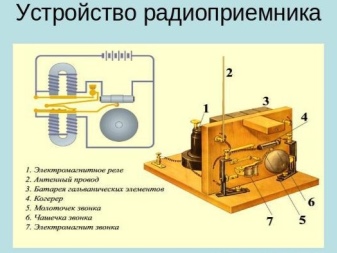
To understand how such a device works, you need to understand how all these parts of one organism interact with each other. First of all, fluctuations in the electromagnetic field create an alternating electric current in the antenna. After that, all signals are filtered, only the most useful information is highlighted.
As a result, the signal received in this way is converted into sound, which is heard by the human ear.
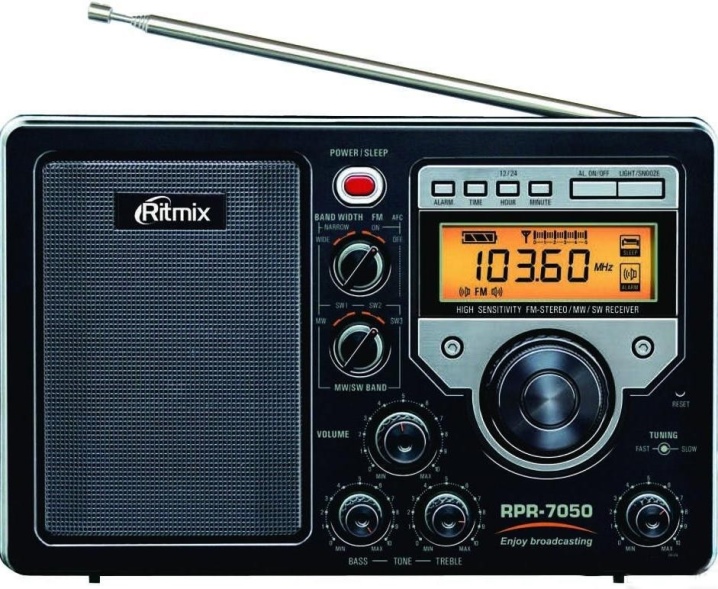
Species overview
All existing radios differ from each other in the type of operation. For example, some of them can be rechargeable, others can work simultaneously both from the mains and on solar batteries. Besides, they can be divided according to several other criteria.
By main purpose
This is the main category for the classification of radio receivers, they come in several types.
- Broadcasting. The essence of their work lies in the transmission of sound information either over the air or over wired networks.
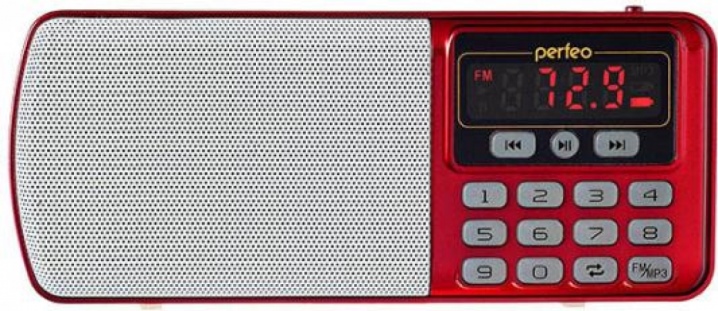
- Direction finding. In such devices, the bearing is directed to the source of radio emission.
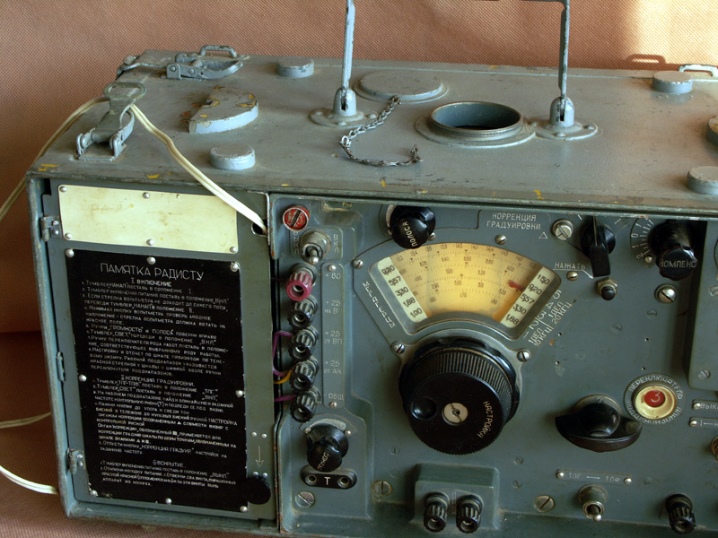
- Radar. They work from a radar station.
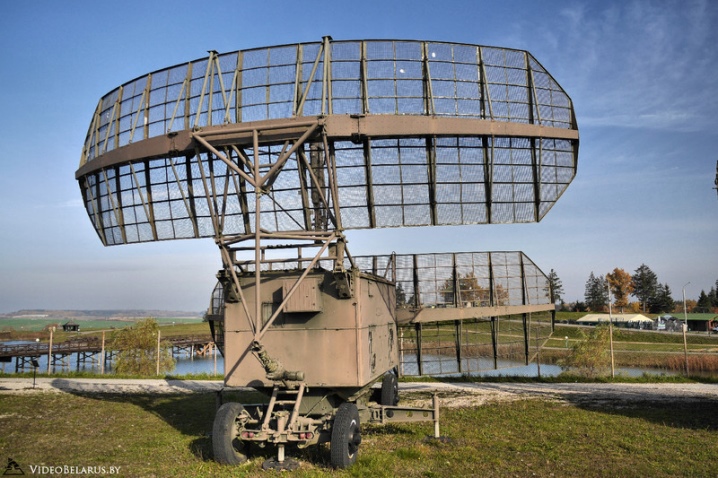
- Measuring. The main purpose of such radios is to selectively measure the power of audio signals. They are also called construction. In addition, such devices have several additional functions - modulation measurement and spectral analysis of signals.

By type of work
According to this principle, radio receivers can be divided into:
- radiotelegraph or army;
- phototelegraph;
- radiotelephone.

By the type of modulation
There are only two types of modulation type radios. One of them is called amplitude and is used only at short wavelengths. Such receivers have a narrow signal bandwidth.
Frequency modulation is used for wider frequency ranges.
Such receivers differ from previous devices in sound quality.

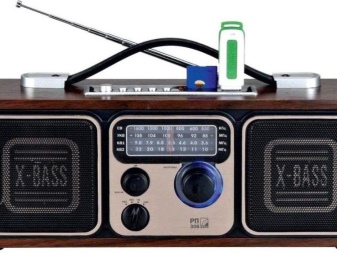
By the range of received waves
- Longwave. The range of DV-waves is within 700-2000 meters; it all depends on the power of the radio transmitter.However, the sound quality of such devices is not particularly pleasing.
- Medium wave. The frequency range of such receivers is within 200-500 meters. The propagation of the sound signal depends entirely on the time of day. At night, waves are reflected from the ionosphere. For this reason, they can easily travel several thousand kilometers, which is not possible during the day.
- Shortwave. The sound quality in such receivers is higher. The signal is transmitted equally well both day and night.
- Ultra-shortwave. There are two types of such devices. Domestic VHF ranges from 65 to 74 MHz. But foreign HFs operate in the frequency range from 87 to 108 MHz. These radios operate with virtually no interference. Extended range models allow you to listen to music on a wide variety of radio stations.

On the principle of constructing the receiving path
There are several options for receiving radio waves, according to this indicator, receivers are divided into a number of types.
- Detector. The simplest devices. They actually do not need a power source, as they operate on the energy of the received radio signal.
- Direct amplification radios. These are those receivers in which there are no intermediate frequency conversions at all, and the amplified signal from radio stations goes directly to the detector.
- Heterodyne they call those devices in which the radio signal is converted into an audio frequency signal using a not too powerful generator. The intermediate frequency is zero.
- Regenerative are called radio receivers that have feedback in the frequency amplification stages.
- Superheterodyne. The operation of such devices is based on converting the received signal into an IF signal and further amplifying it.

By signal processing method
- Analog. The captured signal is amplified and detected. Tuning is done by rotating a dedicated tuning wheel.
- Digital. Processor controlled. Thanks to this, the frequency range allows you to hear the highest quality sounds.
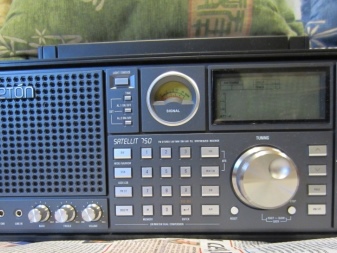
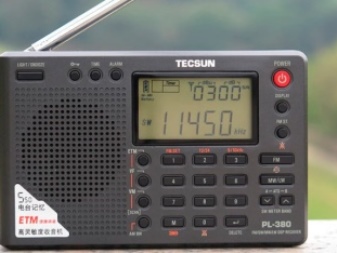
By the used element base
According to this principle, devices can be divided into several varieties.
- Lamp. These are the simplest radios.
- Transistor. Such a device has a scanning screen. For this reason, it is quite powerful.
- Semiconductor. Such wired radios have recently managed to oust most of all electronic devices from the technology market. They provide high quality and loud sound.
- Microelectronic. The circuitry of such devices is on a film or plate. It fits into a non-separable receiver housing.
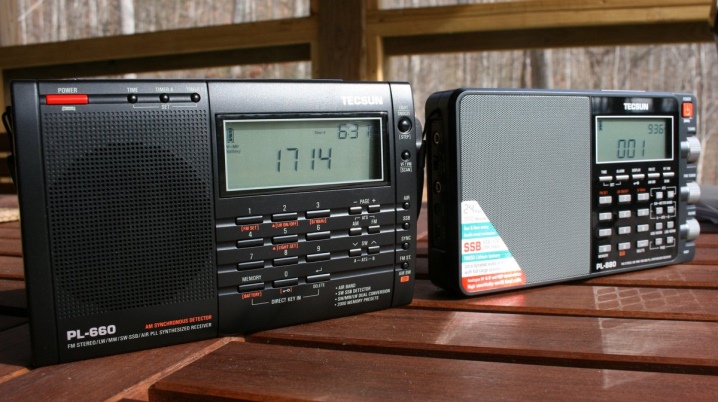
By execution
The quality of the radio signal of devices directly depends on the type of antenna, as well as on characteristics such as selectivity and sensitivity. Antennas, in turn, are divided into built-in and external.
As for the external antenna, it has a circular directivity. This allows you to receive a signal from various radio stations without additional tuning. Built-in or standard antennas can receive a signal at both short and medium wavelengths.
They can work fine close to radio stations, but they do not pick up signals at a distance.

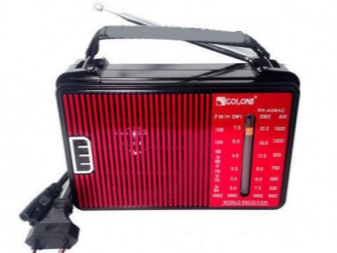
At the place of installation
Radios can be stationary and portable. The first of them look pretty solid and have the appropriate weight and the same dimensions. They are distinguished by high quality sound. Usually such models are bought for installation in homes.
Portable radios differ from other devices in their compact size and low weight. Most often they are bought for a summer residence or on a hike, because they can be easily carried in a small bag or backpack.
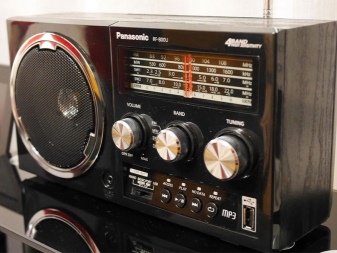
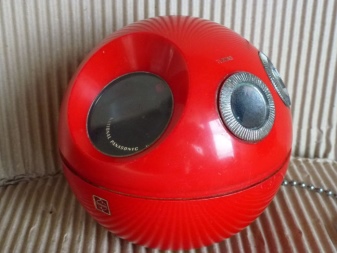
By way of food
Radios can operate from different power sources.
- On the battery. The product is powered by either a built-in or an external battery.
- From a network of 220 V. Stationary devices most often have a built-in power supply inside and operate on AC power.
- From battery. These receivers most often operate on batteries of various sizes.
Some manufacturers produce devices that have a combined type of power supply. They are called internet receivers and have many more features than regular radios. In addition, the sound quality is at a high level, regardless of where they are located.
However, these devices require a satellite connection.

Top Models
Modern Russian-made radios are not inferior in quality even to Japanese devices. Some of them are equipped with a remote control, others have Bluetooth.
- Sangean. This company was founded back in 1974. Its main headquarters were in the United States of America as well as in the Netherlands. Now the devices are made in China. The radios are of high quality, have a remote control, Wi-Fi.

- Lyra. Domestic manufacturers also produce high quality equipment. Such devices are produced at the Izhevsk radio plant and meet all standards.
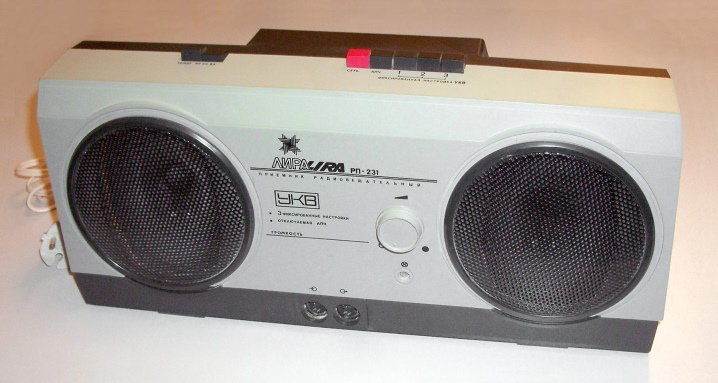
- Tecsun. This Chinese company was founded in 1994. Almost all receivers can operate at different frequencies. They are considered the most sensitive among competitors; have two speakers.

- Perfeo. Another Chinese manufacturer that produces radios. Usually they are purchased for hiking or travel. They are quite simple but practical.
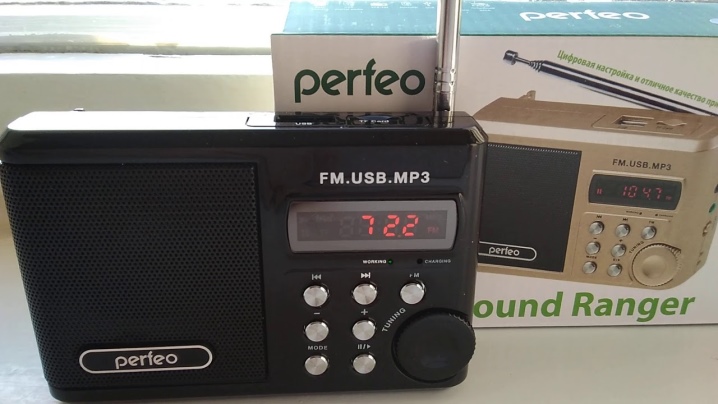
- "Signal". These devices are produced at the Berdsk Electromechanical Plant. Such a radio is complemented by Bluetooth as well as a USB connector.
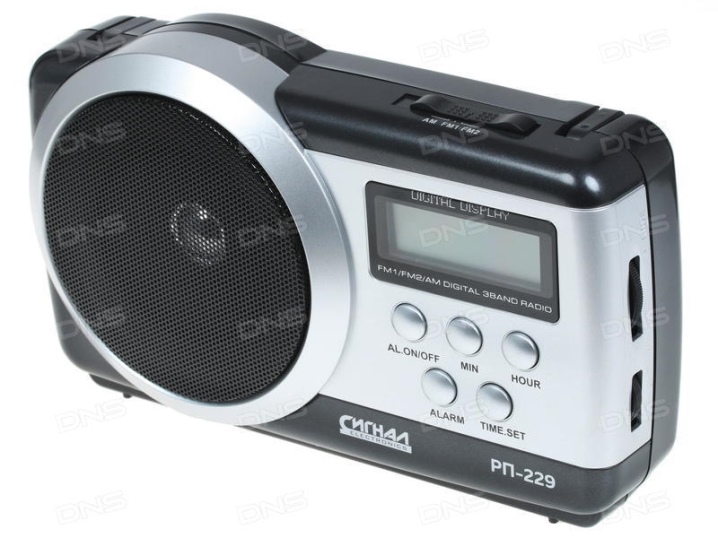
- Eton. American radios are protected from both moisture and dust. In addition, such all-wave devices are shockproof.

How to choose?
In the event that you want the device to have a clear and powerful sound, you need to turn your attention to stationary receivers. And also you need to look at the quality of the product and reviews about it. This will save you from buying a knowingly bad thing.
It is not necessary to go beyond the budget - quality receivers are now sold at a fairly low price.
See below for an overview of one of the models.













The comment was sent successfully.